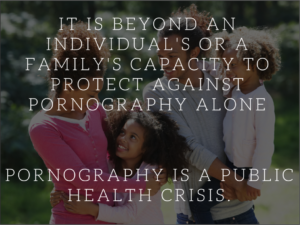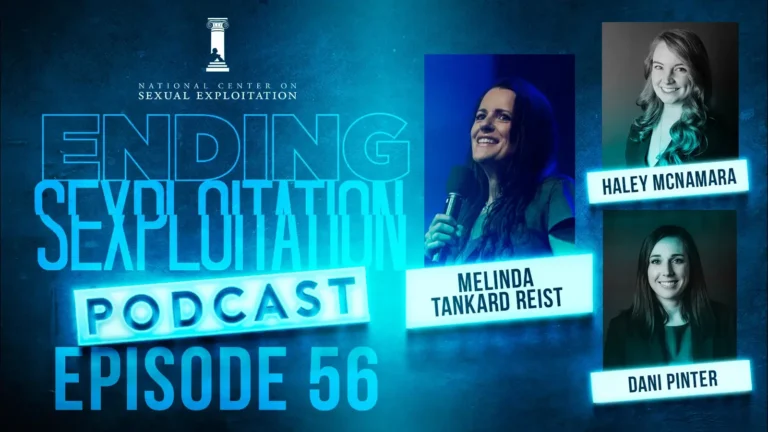Many are excited about Amazon’s Alexa, a voice service that acts as a personal assistant. Alexa answers questions, reads audiobooks and the news, reports traffic and weather, provides sports scores and schedules, orders Ubers and pizza, controls your lights, and so much more to help make your life easier and more connected.
Sadly, though, a young boy recently asked Alexa to play a popular toddler song. In return Alexa gave him several pornographic phrases.
Warning: Graphic sexual language in video.
An Amazon PR person reached out to Mashable saying, “This issue has been fixed, and we are working to build additional restrictions to prevent this from happening in the future,” the spokesperson said. “We have also contacted the customer to apologize.”
While we applaud Amazon’s swift response and their willingness to apologize, there are two major concerns still on the table.
ONE: This Alexa episode is another in a long laundry list of dirty business Amazon is involved in. Most of us can’t imagine life without Amazon these days. From their lightning fast service delivering even the most obscure items right to our door to binge-watching our favorite shows now streamed right on Prime. They offer really incredible life-hacks. But, that shouldn’t get us to excuse the fact that they are also a major facilitator (and profiteer) of sexual exploitation
Amazon is on the National Center on Sexual Exploitation’s Annual Dirty Dozen List with 11 other mainstream contributors to exploitation in America. Reasons for Amazon’s inclusion on this list include: the selling of eroticized child nudity books, sex trafficking how-to manuals, and hardcore pornography; serving as web host to porn websites; and much more. See here for more examples.
Join with us and thousands more by asking Amazon to change course! Contact their executives and demand that they do more to deliberately reject profits that come from sexual exploitation.
TWO: We cannot just simply accept an “I’m sorry” when our most vulnerable, innocent young children, are exposed to pornography. Amazon is doing what others before them have done. They think that they can just say “whoops” and we’ll all move on and forget what happened. (See also Disney or )
Nevermind that pornography has reached public health crisis levels.
That it normalizes the notion that women are sex objects among both adolescent boys and girls. (1)
Or that it puts our youth at greater risk for physical and sexual victimization. (2)
Or that it is linked to increases in problematic sexual activity at younger ages, and a greater likelihood of engaging risky sexual behavior, such as hookups, multiple sex partners, anal sex, group sex, and using substances during sex as young adolescents. (3)
Defenders of pornography consistently resort to the argument that parents just need to parent better.

Well, as demonstrated perfectly in this viral video, even when parents are sitting right next to their child, it IS NOT POSSIBLE to completely protect our young ones from this harmful content.
We must hold companies to higher standards. It takes more than parents to help protect and prepare children for the onslaught of hyper-sexualized messages coming their way. It takes the help of corporate leaders too!
____________________________________
- Jochen Peter and Patti Valkenburg, “Adolescent’s Exposure to a Sexualized Media Environment and Their Notions of Women as Sex Objects,” Sex Roles 56 (2007): 381-395; Jane D. Brown and Kelly L. L’Engle, “X-Rated: Sexual Attitudes and Behaviors Associated with U.S. Early Adolescents’ Exposure to Sexually Explicit Media,” Communication Research 36, no. 1 (February 2009): 129-151.
- A nationally representative survey of pornography use among youth aged 9–17, found that those with increased exposure to Internet pornography were significantly more likely to report physical and sexual victimization. Michele L. Ybarra and Kimberly Mitchell, “Exposure to Internet Pornography among Children and Adolescents: A National Survey,” CyberPsychology & Behavior 8, no. 5 (2005): 473–486.
- Debra K. Braun-Courville and Mary Rojas, “Exposure to Sexually Explicit Web Sites and Adolescent Sexual Attitudes and Behaviors,” Journal of Adolescent Health 45 (2009): 156–162; Peter and Valkenburg (2007); C. Marston and R. Lewis, “Anal Heterosex Among Young People and Implications for Health Promotion: A Qualitative Study in the UK,” BJM Open 4 (February 4, 2016): 1–6; Emily R. Rothman, Michele R. Decker, Elizabeth Miller, Elizabeth Reed, Anita Raj, and Jay G. Silverman, “Multi-Person Sex among a Sample of Adolescent Female Urban Health Clinic Patients,” Journal of Urban Health: Bulletin of the New York Academy of Medicine 89, no. 1 (2011): 129–137; E. Häggström-Nordin, U. Hanson, and T. Tydén, “Association between Pornography Consumption and Sexual Practices among Adolescents in Sweden,” International Journal of STD & AIDS 16 (2005): 102–107; Svedin, ibid.




